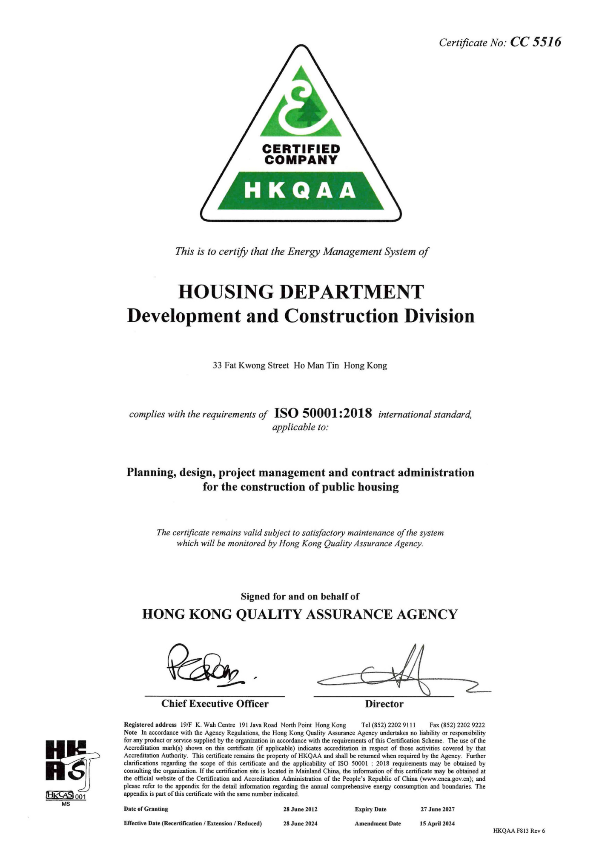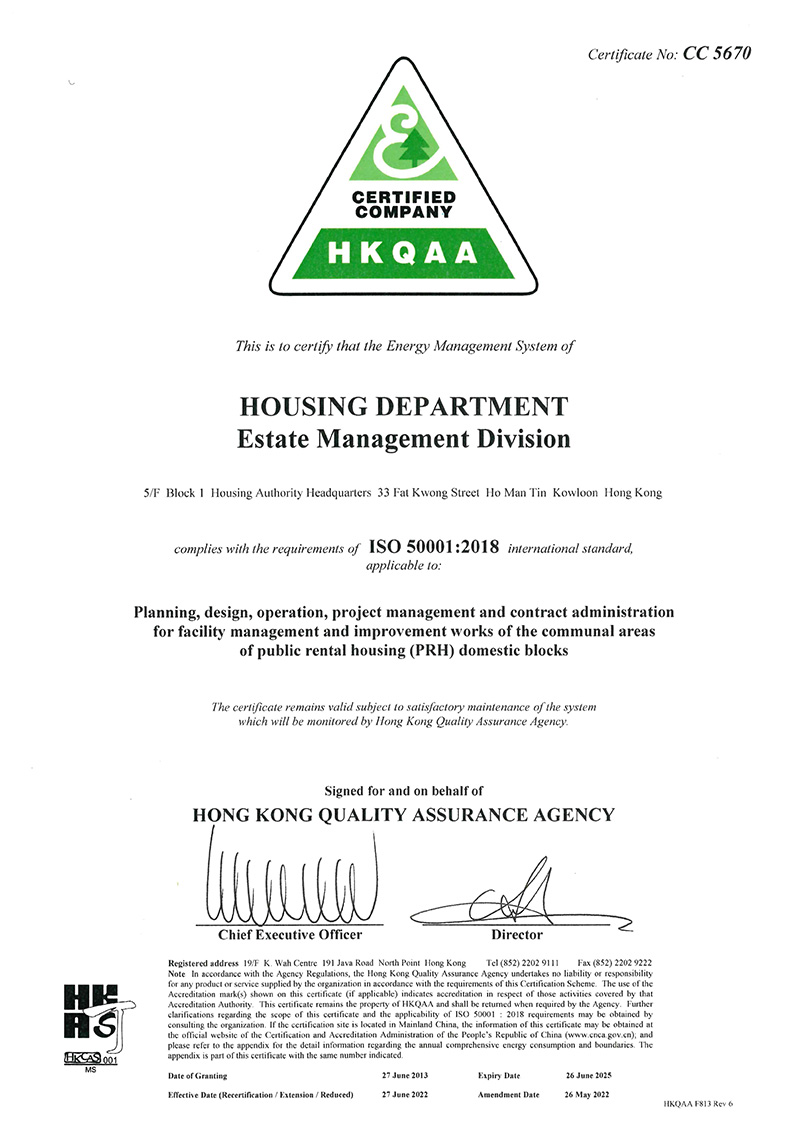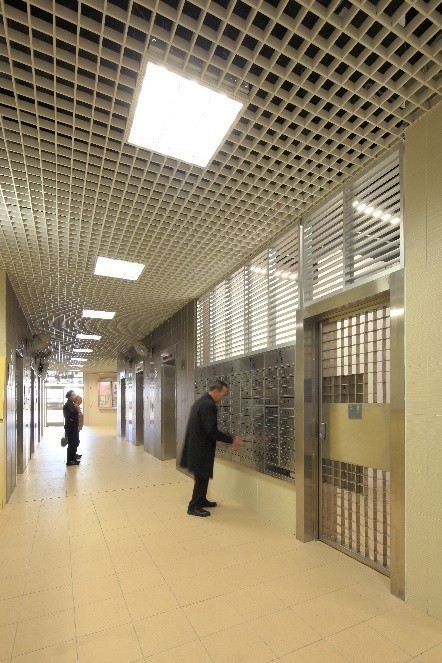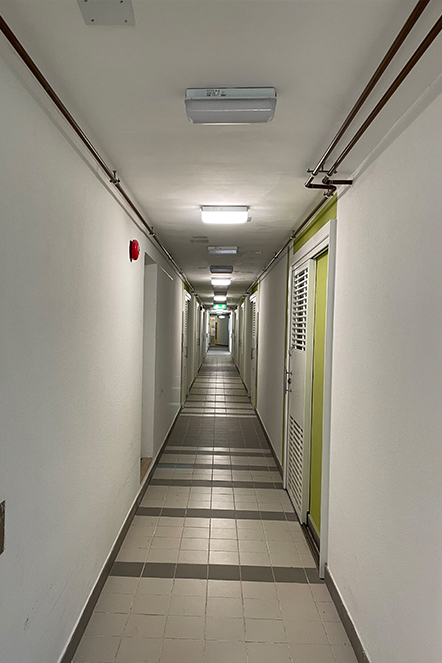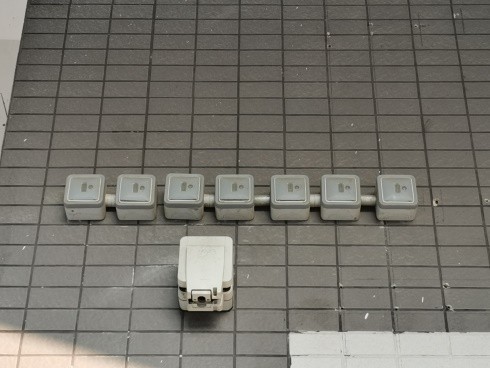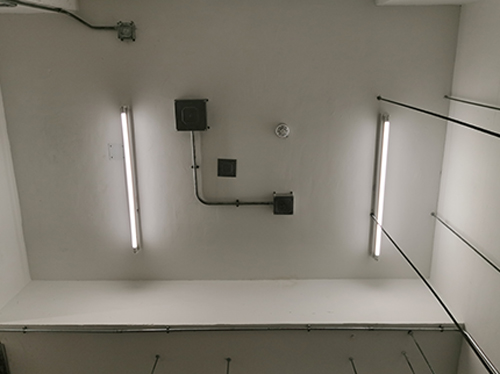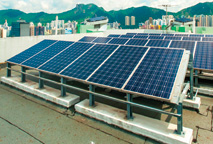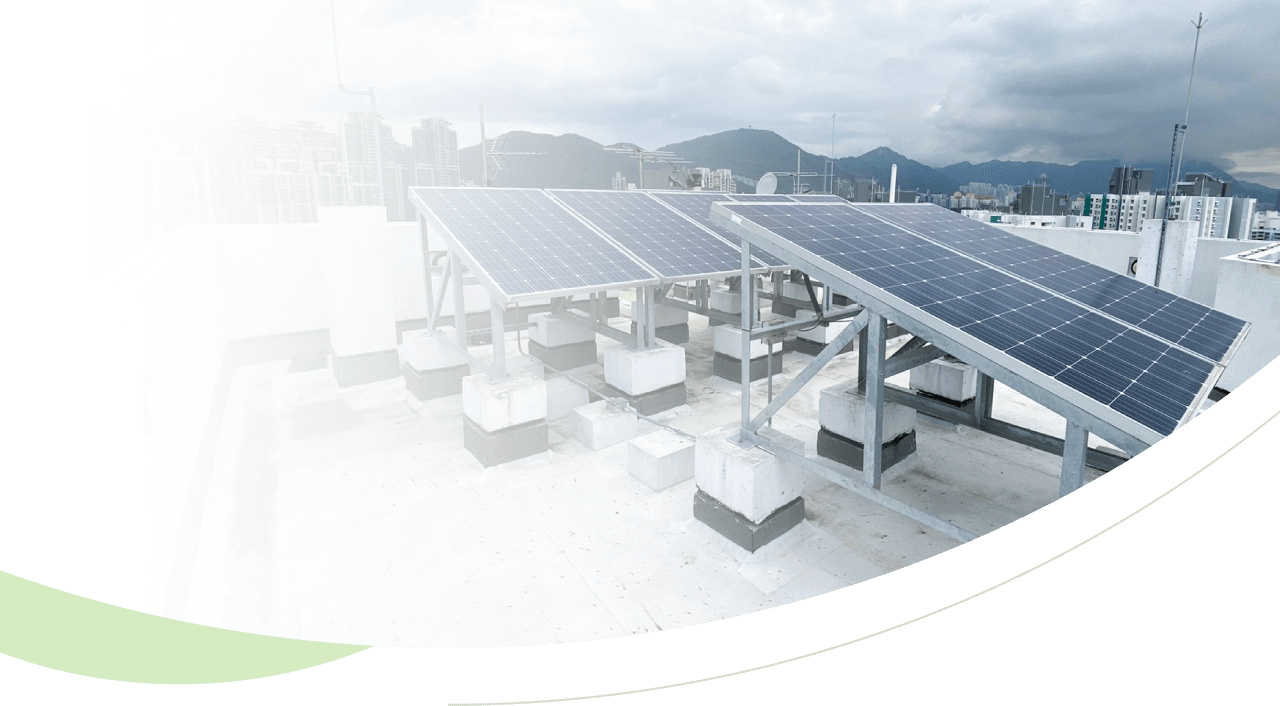
Energy
Conservation
-
Since December 2011, we have established and implemented an EnMS in accordance with the ISO 50001 standard on our residential building design. Through the implementation of the EnMS, a baseline and an Energy Performance Indicator (EnPI) for energy consumption of building services installed in the communal areas of the public housing blocks were initially set at 30 kWh/m² annually, and applied to all our new projects for comparison, and for design adjustment to achieve the target performance if necessary. This EnPI was tightened from 27 kWh/m² to 24 kWh/m² in 2016 and reduced to 23.5 kWh/m² in 2020 to further enhance the energy performance of our designs.
The ISO 50001 EnMS was built on a Plan-Do-Check-Act management model which focused on energy efficiency, use and consumption in communal building services installations of domestic public housing blocks. In June 2012, we obtained the ISO 50001:2011 certification on residential building design. With the promulgation of the 2018 edition of ISO 50001 in August 2018, we successfully transited to ISO 50001:2018 in August 2020.
For the existing estates, Kwai Shing West Estate was the first residential estate and the first public rental housing (PRH) estate in Hong Kong granted with ISO 50001 certification in June 2013. With the successful experiences gained at Kwai Shing West Estate, we extended the certification to cover all existing PRH domestic blocks by April 2015 in two phases.
The Phase One certification covering the domestic blocks in 92 PRH estates was obtained in August 2014 and the Phase Two extended certification to cover the domestic blocks in all existing estates has been obtained in April 2015. With the promulgation of the 2018 edition of ISO 50001 in August 2018, we successfully transited to ISO 50001:2018 in June 2020.
-
To meet accessibility requirements as laid down in the Design Manual: Barrier Free Access 2008 promulgated by the Buildings Department, the illumination standard for public areas has been increased to accommodate people with special needs such as those with vision impairments. To achieve this standard without increasing energy consumption, a two-level lighting control system has been adopted in new domestic block designs since December 2008. The system allows users to adjust lighting levels as needed.
-
All new buildings comply with the Building Energy Codes issued by EMSD for lighting, electrical, HVAC, and lift/escalator systems. Since August 2015, 280 HA buildings had received Certificates of Compliance Registration under the Building Energy Efficiency Ordinance from EMSD, demonstrating compliance with energy efficiency requirements.
-
Motion sensor controls for lighting are installed at staircases to turn on the lighting upon detecting any people. Photocell sensor controls are installed in areas with natural light fenestration, such as areas near the windows in communal areas, to switch off some lighting to save energy when the illumination level is adequate.
-
For fluorescent type lighting fittings, about 20% of electrical energy could be saved if electronic ballast is used instead of electromagnetic ballast. In view of this, since 2003, we have widely adopted the use of electronic ballast. At present, all fluorescent type lighting fittings are equipped with electronic ballasts.
Starting from 2012/13, we have launched a 42-month programme of replacing existing light fittings equipped with electromagnetic ballast by energy-saving electronic ballast in communal areas of all our existing estates, covering around 960 domestic blocks. The replacement work for all 960 domestic blocks have been completed in September 2015.
-
To increase energy efficiency, HA has adopted LED lighting in new developments. Since early 2016, LED bulkheads have been the standard luminaire for communal areas in new domestic blocks. HA has also adopted LED exit signs, directional signs, and tubular lamps in new projects starting in 2019. LED lighting is now a standard design in new developments
For existing PRH blocks, starting from 2019/20, LED bulkheads have been adopted in communal areas to replace defective public lighting. Besides, LED exit signs and directional signs are also used to replace the conventional ones.
-
To improve energy efficiency, the HA has adopted variable speed drive control system for fresh water booster pump systems in all new projects. Together with the use of smaller stainless steel pneumatic pressure vessels, the system could achieve higher energy efficiency and occupy less plant room space.
-
To improve sustainability, HA has adopted innovative HVAC systems in some new developments. For example, hybrid ventilation and free cooling systems at shopping centers combine natural and mechanical ventilation to reduce energy use. By switching between ventilation modes based on users’ need, these systems decrease energy consumption and hence carbon emissions. HA will consider using this system in other appropriate projects in accordance with relevant guidelines.
-
HA has adopted innovative technologies such as district cooling systems (DCS). The PRH developments at Kai Ching Estate and Tak Long Estate developments use a centralized DCS provided by the Electrical and Mechanical Services Department (EMSD) to supply chilled water to air conditioning systems for non-domestic facilities including shops, kindergartens, and estate offices. Through centralized cooling, the DCS can save up to 35% more energy than conventional systems.
-
HA has adopted energy-efficient technologies for lifts. These include permanent magnet synchronous motors, regenerative drives for high-power motors, and gearless/machine-room-less lifts. These technologies increase energy efficiency and reduce space requirements. By utilising these technologies, HA is working to create greener public housing.
-
To encourage sustainable living, HA has adopted technologies that provide energy usage information to residents. The Smart Meter Monitoring and Energy Information Display System comprising smart meters and displays that show electricity, gas, and water consumption for blocks in the estate at the main entrance lobbies. The displays facilitate comparison of energy use between blocks, raising awareness of conservation opportunities. By providing transparent data, the system helps residents understand and reduce their environmental impact. Through initiatives like this, HA is working with residents to build a greener community.
-
To promote the use of renewable energy in line with Government’s policy, HA has incorporated photovoltaic (PV) systems into public rental housing blocks where technically feasible since 2011. New rental housing blocks have included grid-connected PV systems that generate renewable electricity for communal areas providing 1.5-2.5% of communal electricity needs. HA continues to explore and pilot new renewable technologies in public housing. Through the use of clean energy, HA is working to make Hong Kong's public housing more sustainable. There are over 150 new domestic blocks installed with grid-connected photovoltaic systems with a total system capacity over 1,400 kW.
For existing PRH estates, HA completed the first trial project of flexible PV system at Kwai Shing West Estate at the end of 2021. Afterwards, it is planned to install flexible solar PV systems at about 36 existing PRH estates progressively by the first quarter of 2025.
-
A pilot grid-connected mono-crystalline silicon PV system at Lam Tin Estate has been in operation since August 2009. It could feed in certain amount of renewable electricity to the electricity grid.
In view of the satisfactory performance of the pilot PV system, the HA decided in 2011 to implement grid-connected PV system in all new public rental housing developments to feed in renewable electricity equivalent to about 1.5% to 2.5% of the electricity demand of the building communal area of each domestic block to the electricity grid as far as practicable. Meanwhile, we will continue the search and piloting of other renewable energy technologies for application in public rental housing estates.
-
